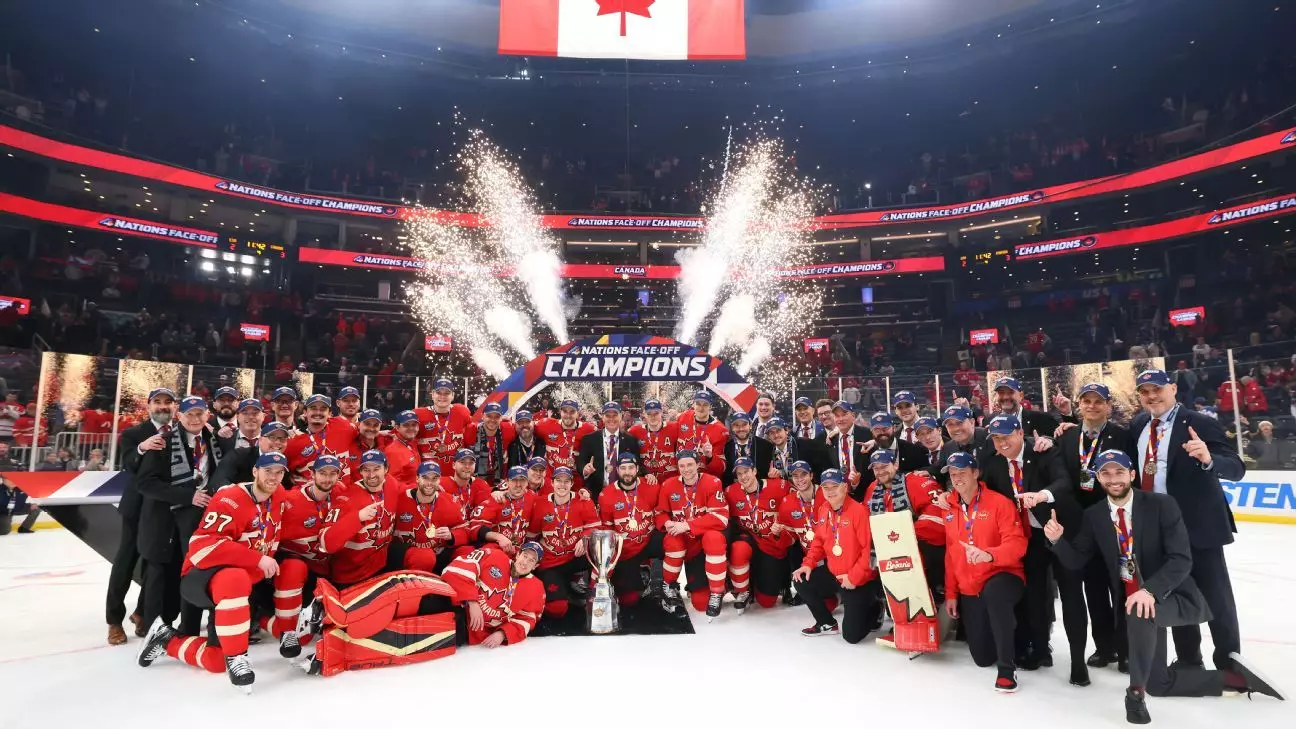The National Hockey League (NHL) is on the brink of a significant transformation in the way it approaches its marquee events, particularly the All-Star showcase. The recent success of the 4 Nations Face-Off has demonstrated that hockey fans respond enthusiastically to new formats that highlight competitive spirit over tradition. NHL Commissioner Gary Bettman’s remarks during the league’s annual general manager meetings underscored this shift as he proclaimed a determination to elevate the All-Star experience to unparalleled heights in 2026, when the New York Islanders will host the event at UBS Arena.
This excitement begs the question: what exactly does “raising the bar” mean in the context of hockey’s All-Star festivities? The NHL’s previous iteration of the All-Star Game has often been criticized for lacking competitive edge and failing to engage fans fully. Instead, the 4 Nations Face-Off revived international competition, showcasing national pride and elite athleticism among the world’s best players. By pivoting from a laid-back exhibition style to a serious competition featuring teams from Canada, the United States, Sweden, and Finland, the NHL fostered an atmosphere that felt true to the competitive nature of the sport.
The Impact of International Competition
What stands out about the newly supported direction is the league’s acknowledgment of the fans’ appetite for more authentic contests. With Canada clutching victory against the United States courtesy of Connor McDavid’s exhilarating overtime goal, it marked not only a memorable climax to the tournament but a reminder of how compelling hockey can be when the stakes are high. This return to competitive play also serves as a precursor to potential NHL participation in future Olympic events, particularly given the league’s absence in 2018 and 2022. This move towards maintaining a competitive ecosystem has undoubtedly resonated with players and fans alike.
Moreover, Bettman’s commentary on future engagement with the IIHF regarding Olympic participation signals a robust commitment to international hockey. As leagues worldwide increasingly adopt global perspectives, the NHL understands that fostering international relations through competition not only diversifies the sport’s appeal but also raises its stature on the world stage. The imminent discussions might well define how young talent from various countries perceives the NHL as a premier destination for professional hockey.
An Open Canvas for Future Formats
Looking ahead, the promise of a reimagined All-Star game is just one element of a larger strategy. Bettman and Deputy Commissioner Bill Daly suggest an openness to innovative ideas, emphasizing that “everything is on the table.” This mindset shows a refreshing willingness to adapt, inviting club feedback and collaboratively crafting a fan experience that is both engaging and aligned with audience expectations.
As the league anticipates discussions on a new collective bargaining agreement (CBA) with the players’ association, Bettman’s optimism about logistics and operations shines through. His assertion of a “quickly, quietly and painlessly” negotiation paints a hopeful picture. The discussions surrounding player eligibility rules—a controversial topic recently addressed by NCAA policy changes—may sprinkle additional complexity into negotiations, but the NHL seems poised to navigate these improvements effectively. While players and teams might be grappling with potential implications on contracts and rosters, the underlying objective remains clear: to enhance the player experience without compromising the integrity of the league.
The Evolution of Draft Processes
Another innovative facet on the NHL’s agenda is the shift towards a decentralized draft format. Rather than hosting all thirty-two teams in a single location, the plan to allow representatives to participate remotely from their respective cities may seem unconventional. However, it embodies a larger trend in sports leagues towards flexibility and inclusivity. If successful, this model could alter the traditional drafting experience forever, allowing for a more dynamic and immediate engagement with fans, as teams scout players in their local environments.
Ultimately, the NHL’s willingness to experiment with its draft approach underscores a commitment to remain relevant in a rapidly changing sports landscape. Fans are not simply passive observers; they want to engage with teams and prospects in a way that feels immediate and personal. Bettman’s remark about seeking feedback after this overhaul reflects a conscientious effort to fine-tune processes based on what clubs and fans truly want.
The NHL stands at a fascinating juncture, with a genuine opportunity to redefine how it engages with its audience—both during the All-Star Game and beyond. The forthcoming evolution of the All-Star experience, along with initiatives around player negotiation and draft practices, hints at a league that is eager to adapt and grow. As the NHL seeks to bridge its rich history with contemporary expectations, fans can prepare for an exciting, unpredictable future.


Leave a Reply